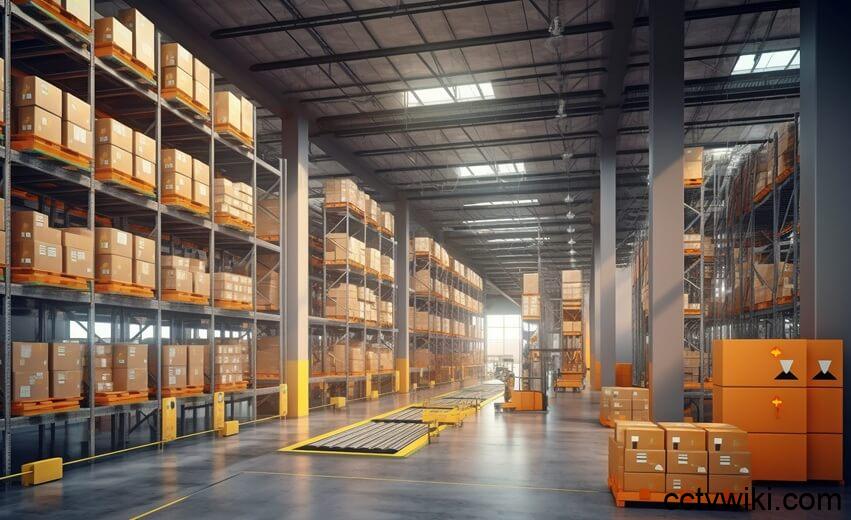Warehouses, vital hubs in the logistics chain, are prime targets for security breaches, but advanced technologies offer robust solutions for protecting both personnel and valuable assets. These large facilities, often operating around the clock, face a complex array of challenges that demand sophisticated security measures.
“Common issues include theft or pilferage, unauthorized access to restricted zones, vandalism, and after-hours intrusions,” explains Mary Beth Kosmicki, Communications Manager at Pavion. “In addition, safety incidents such as forklift collisions or improper material handling can lead to downtime and liability concerns.”
Let’s delve into the specific security and safety concerns plaguing warehouses and explore how cutting-edge technologies are stepping up to address them.
Theft and Organized Crime: A Persistent Threat
Warehouses are treasure troves of valuable goods, making them magnets for thieves and, more alarmingly, organized crime syndicates.
Brian Lee, MD of IDIS Europe, emphasizes the severity of the situation: “Organized crime gangs (OCGs) continue to present a severe and multifaceted threat to the warehouse sector, engaging in sophisticated operations that include cargo theft, fraud, and the systemic infiltration of supply chains. These criminal enterprises often target goods by exploiting security weaknesses, utilizing insider information, or deploying cyberattacks and spoofing to compromise surveillance systems.”
The consequences are far-reaching, extending beyond immediate financial losses to significant supply chain disruptions, tarnished corporate reputations, and escalating insurance premiums.
Cybersecurity: The New Frontier of Warehouse Security
Like virtually every industry, warehouses are increasingly vulnerable to cyberattacks, which can have devastating consequences for operations.
Lee points out the significant costs associated with supply chain cyberattacks: “Supply chain cyberattacks, which frequently affect warehousing and logistics operations, are particularly costly to address – estimated to require 17 times more resources to remediate than breaches that directly target a standalone company. The estimated cost of a single data breach can vary widely, but cyber experts estimate it ranges from several million to tens of millions of dollars.”
Health, Safety, and Environmental Risks: A Multifaceted Challenge
Warehouses also contend with a range of health, safety, and environmental risks, from workplace injuries to natural disasters, all capable of crippling operations.
“According to the latest Occupational Safety and Health Administration (OSHA) data, the average direct cost of a serious workplace injury in the U.S. can range from US$40,000 to $100,000+, while indirect costs can be 2-4 times higher, with fatal injuries exceeding $1 million per incident,” Lee notes. “Slips, trips, and falls in warehouses are a common cause of injury, followed by workers being struck by moving objects, including machinery such as forklifts and side loaders.”
He adds, “Warehouses are also at risk of fires, floods, and extreme weather events, goods-handling inefficiencies, and human error.”
Security to the Rescue: How Technology Can Help
Fortunately, today’s advanced security solutions offer effective ways to mitigate the risks facing warehouse operators.
Kosmicki highlights the proactive nature of modern security: “Modern security solutions take a proactive approach to these challenges through intelligent video surveillance and access control. Advanced analytics can automatically detect motion, loitering, or perimeter breaches, while integrated access systems ensure every entry and exit is authenticated and recorded. Together, these technologies help organizations maintain a safer, more transparent operation while reducing losses and improving response times.”
These advanced systems also incorporate cybersecurity features to defend against digital threats. Stéphane Quetglas, Director of IoT Consumer and Industrial Marketing at Thales, explains how her company’s solutions contribute to cybersecurity: “Thales ensures the secure transmission and storage of video streams through strong encryption and authentication mechanisms. Warehouse management systems … are critical for operations and must be protected from cyberattacks. Thales secures these systems with hardware security modules (HSMs) for cryptographic key protection and secure APIs to prevent data tampering.”
Intelligent security solutions are also proving invaluable in addressing health and safety risks. “AI-powered fall detection can now enable earlier and more consistent intervention when accidents occur. Abandoned object detection supports safety monitoring by triggering automatic alerts when potentially dangerous obstructions occur in areas that must remain clear,” Lee explains. “AI cameras mounted on the vehicles provide live and recorded views, while rear and side cameras help operators navigate blind spots and tight spaces. If a staff member approaches a vehicle in operation, the driver is alerted with an alarm.”

